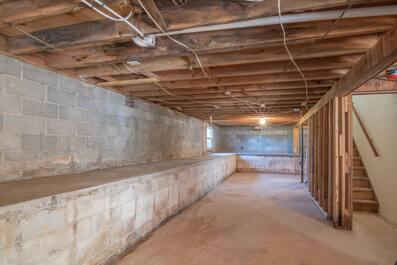Have you been deep into a renovation or building project in Maryland or DC, and then someone wants a last-minute change? It’s common and can disrupt your budget and schedule, not to mention the stress it adds.
But don’t worry, you can avoid these headaches. With careful planning and clear communication, you can prevent these issues.
Let’s walk through the steps to keep your project smooth, from creating a clear plan to choosing the right team and focusing on the details. You might finish your project without any major stress!
 1. Begin With Thorough Planning
1. Begin With Thorough Planning
A successful construction project is built on the foundation of meticulous planning. Before any physical work starts, it’s crucial to nail down every detail. This means understanding the full scope of the project, setting clear and achievable goals, and settling on a design that meets both functional needs and aesthetic desires.
Utilizing detailed blueprints and 3D models can bring your vision to life, helping everyone see the end goal. Bringing in architects and interior designers right from the start can help spot potential issues early and integrate solutions into the initial plans. This step is about doing things correctly to avoid surprises later on.
2. Ensure All Stakeholders Are Informed
Good communication is key in construction. Everyone involved from homeowners, architects, contractors, and regulatory bodies, needs to be on the same page from day one. Regular meetings and updates can keep misunderstandings at bay and ensure no one’s expectations are left unmet.
Encourage an environment where everyone can voice their concerns or suggest improvements early. This open dialogue helps catch issues before they turn into costly changes.
3. Be Realistic with Budgets and Timelines
Have realistic expectations about the budget and timeline. Set a budget that includes a buffer for those unexpected costs. Likewise, your timeline should be realistic, allowing room for those inevitable delays that crop up in almost every project. This way, you won’t make rushed decisions or changes as the project unfolds, keeping everything flowing more smoothly.
4. Choose Materials Wisely and Do Your Homework
Selecting the right materials is crucial to your project’s success and longevity. Take the time to research materials that aren’t just beautiful but are durable and suited to Maryland and D.C.’s unique climates.
Sometimes, what looks good on paper doesn’t hold up and that’s where last-minute changes can creep in. Partner closely with suppliers to ensure material availability and lead times. This proactive approach prevents the need for last-minute substitutions that don’t match your original vision.
 5. Regular site visits are essential for staying updated on progress.
5. Regular site visits are essential for staying updated on progress.
Whether you’re a project manager or a homeowner, these visits are an opportunity to observe the development firsthand and discuss any concerns with your contractors. This proactive approach helps catch minor deviations before they evolve into expensive changes. It ensures that any problems are resolved swiftly and effectively.
6. Plan with determination but remain adaptable.
While a detailed plan is essential, it’s also important to allow some flexibility. Your plans should be strong yet flexible enough to accommodate minor adjustments without causing major disruptions. This balance is key to handling unexpected challenges without spiraling into extensive, expensive changes.
7. Learn from Others’ Mistakes
Understanding common construction pitfalls can save you a lot of grief. Dive into case studies, seek advice from seasoned professionals, and stay current on new materials and methods. With this knowledge, you can make informed decisions and anticipate potential problems before they necessitate drastic changes.
8. Utilize Technology for Better Coordination
Modern technology offers fantastic tools to enhance project coordination and reduce the risk of last-minute changes. Using project management software, Building Information Modeling (BIM), and virtual reality walkthroughs can give everyone a clearer picture of the project and help identify issues early.
These tools also improve communication among team members, ensuring that updates and changes are communicated quickly and clearly to everyone involved.
Construction projects can be tough, especially in Maryland and DC. But by following the steps we’ve discussed, you can avoid headaches.
By planning well from the start and keeping in touch with your team, you can prevent those last-minute changes that throw everything off. It’s all about being prepared and staying open in your communication to avoid surprises that can mess up your budget and timeline.
And be realistic about costs and use technology to stay organized. Doing this can help you not just meet, but exceed your expectations. With careful planning and open communication, your renovation or new build can turn out even better than you hoped, all with less stress. Now that sounds like a win, doesn’t it?



 5. Regular site visits are essential for staying updated on progress.
5. Regular site visits are essential for staying updated on progress. 

